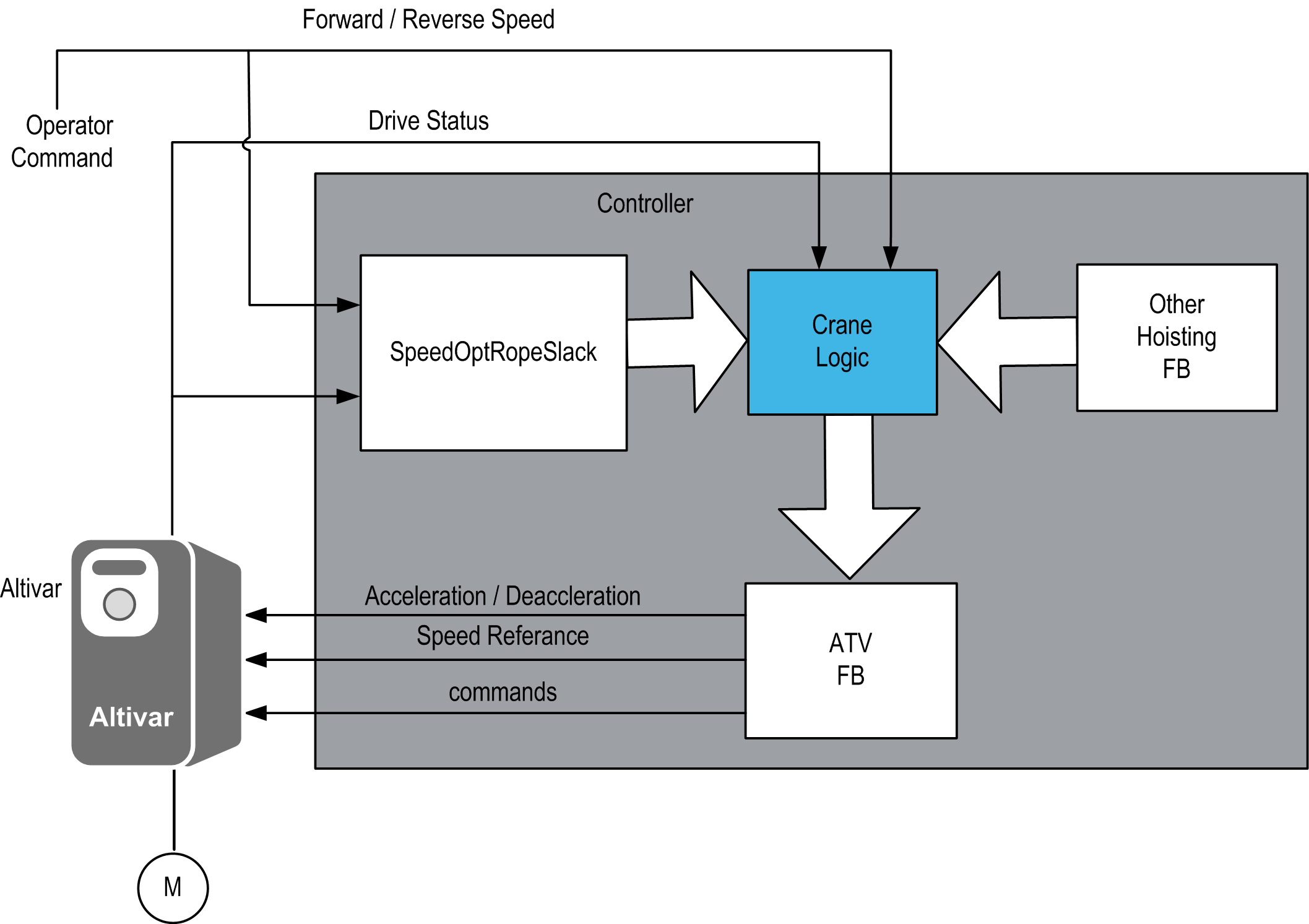The Speed optimization and rope slack function is designed to:
oOptimize the utilization of power based on the actual torque of the drive.
oCorrect any rope-slack commonly found at the start or end of any hoisting operation.
The function is designed to be used with Altivar drives and is applicable to:
oTower cranes
oIndustrial cranes
Why Use the SpeedOptRopeSlack Function Block?
Speed optimization:
During the movement of a hoist, the load can range between the empty hook to maximum load, but the same nominal speed is always used to drive the crane. The Speed optimization function helps you to maintain an optimum working time and increased productivity.
Rope slack:
When the load or hook is on the ground, there could be slack at the rope. At this moment, a high speed movement could lead to a whiplash motion causing damage to the rope or the rope could jump out of the rope guides. The Rope slack function is used to avoid this.
This function block is intended to have significant influence on the physical movement of the crane and its load. The application of this function block requires accurate and correct input parameters in order to make its movement calculations valid and to avoid hazardous situations. If invalid or otherwise incorrect input information is provided by the application, the results may be undesirable.
|
|
|
UNINTENDED EQUIPMENT OPERATION |
|
Validate all function block input values before and while the function block is enabled. |
|
Failure to follow these instructions can result in death, serious injury, or equipment damage. |
Solution with the SpeedOptRopeSlack Function Block
The Speed optimization solution maintains operation at constant power consumption in order to reach a speed greater than the rated speed without exceeding the rated motor current. Constant power operation increases the system efficiency and helps to protect the motor by keeping the over-speed value in check based on the actual torque measured.
The Rope slack function is used to avoid extra rope being let out once the hook has touched the floor.
NOTE: The load on the motor at hook level must be at minimum 10% of the nominal load. Otherwise, the function can not work correctly due, at least in part, to the inefficiency of the gear box. If the load torque is below the minimum 10%, the further reduction by the gear box creates a scenario in which the Altivar drive is not able to determine between generator and motor mode. The result is a non optimized movement with limited speed.

Design & Realization Constraints and Assumptions
When the motor moves in forward direction, the hoist moves up and when the motor moves in reverse direction, the hoist moves down.

NOTE: The function Speed optimization and rope slack works with Altivar drives.